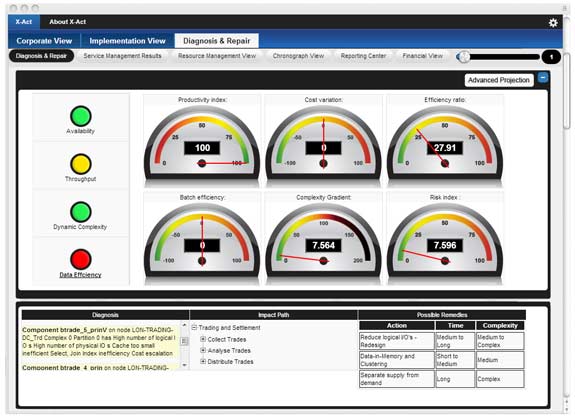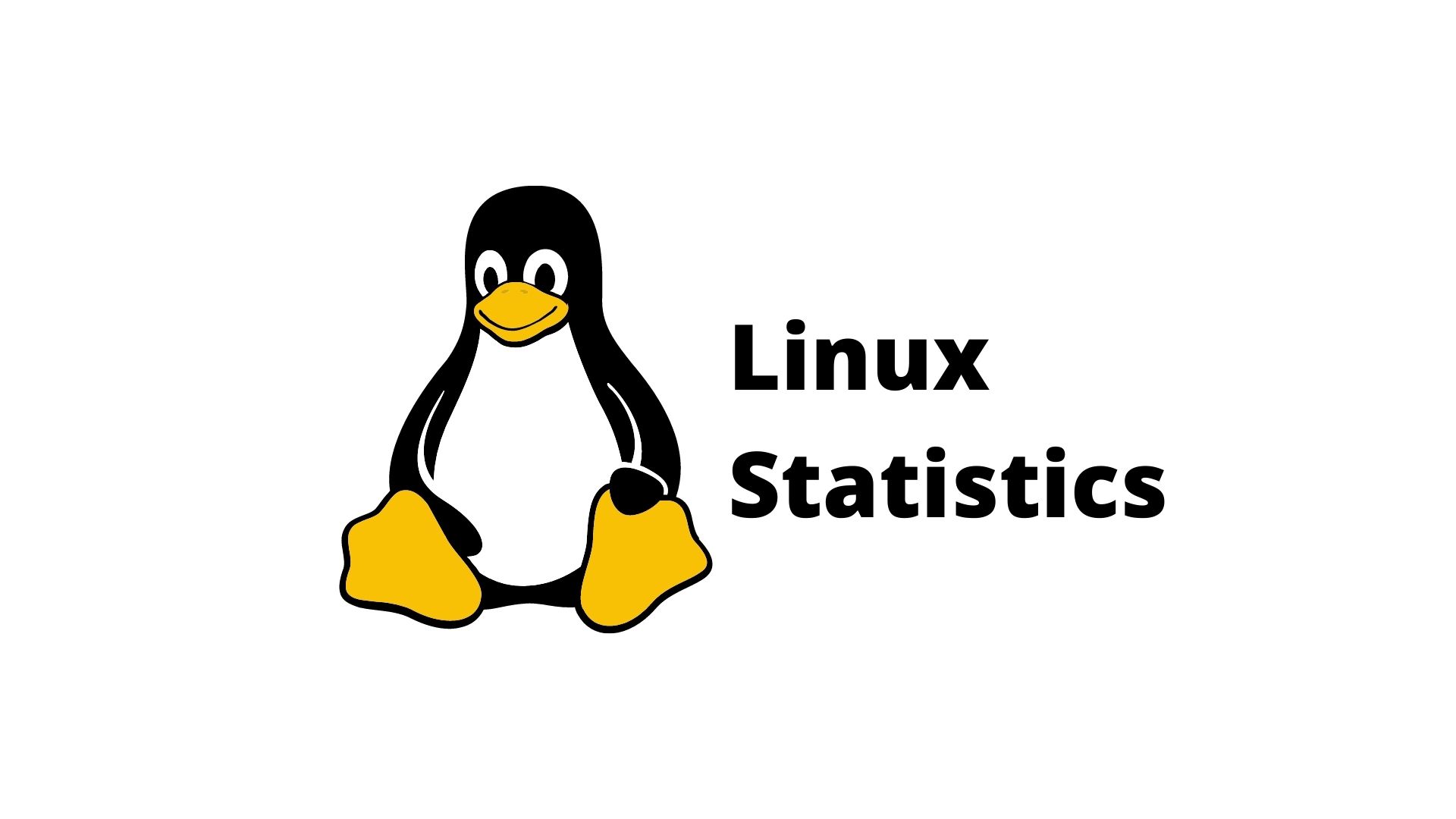5 Buzz-worthy Big Data Analytics Apps
Big Data and analytics are two of the most dominant business intelligence trends for 2013. So bringing the two of them together will likely result in something that can do all kinds of good for your business. As it happens, many products out there seek to bring together these two worlds. Here are five products that have been earning buzz – some from long-established companies and others from lesser-known vendors. Look for five more in part two of this series.
X-Act by Accretive
X-Act is a mathematical analytics technology that attempts to predict the impact of unknown variables to reveal hidden risks to reduce uncertainty. It also can help determine the breaking points and limits of a system. It leverages software, libraries and experience to enable users to predict, observe and mitigate the effects of business and IT change.
 “The objective of the Accretive X-Act method is to build a unified mathematical model of the business or IT environment, which represents the current state of complexity, and key business metrics that include business throughput, service quality and cost while highlighting risks,” said Dr. Nabil Abu El Ata, founder and CEO of Accretive Technologies. “The goal is to mathematically represent and prove that the remediation recommended will deliver business benefit for a dynamically complex environment.”
“The objective of the Accretive X-Act method is to build a unified mathematical model of the business or IT environment, which represents the current state of complexity, and key business metrics that include business throughput, service quality and cost while highlighting risks,” said Dr. Nabil Abu El Ata, founder and CEO of Accretive Technologies. “The goal is to mathematically represent and prove that the remediation recommended will deliver business benefit for a dynamically complex environment.”
El Ata said his company's software competes mainly with statistical-based technologies that address what has happened and why, though he said competitors tend to lack what-if capabilities. Accretive deals more with long-term predictive analyses and what-if planning. Analyzing Big Data alone is not sufficient for holistic decision making, El Ata said.
TIBCO Spotfire 5
TIBCO Spotfire 5 analytics is said to help users visualize and interact with massive amounts of data via in-memory and in-database processing. Michael O’Connell, senior director of Analytics at TIBCO Spotfire, said that a user working with a simple bar chart would see little difference in performance, whether he was working with 10 million, 50 million or 100 million rows of data. The response times for filtering, marking and making selections remain constant as the volume of data in-memory grows, he added.
Spotfire can also take advantage of the calculations of analytic databases such as Teradata, Oracle and Microsoft SQL Server to run calculations in-database, where the data resides, and then visualize the results.
“We’re helping business analysts who may not have formal training in statistics or programming, by providing a menu of self-service predictive tools right in the menu in the core of the platform,” said O’Connell. “With the current excitement around Big Data and data science, there are some solutions that are dangerous because they have a simplistic attitude of putting Big Data directly into end-users' hands. This can lead to problems such as chasing noise, throwing out data that doesn’t match pre-conceptions, confusing leading and lagging indicators, and interpreting correlations as causation. There needs to be built-in guidance and a framework of end-user data discovery, collaboration and enterprise readiness that promotes rigorous and real analysis on the business.”
Pentaho Instaview
Instaview provides self-service analytics for Big Data stores such as Hadoop, Cassandra, HBase and MongoDB. According to the company, it broadens data access to data analysts and removes the need for separate Big Data visualization tools. Users choose the data source, automatically prepare the data for analysis, and then begin viewing the resulting visualizations.
“Pentaho Instaview offers benefits to data analysts to visualize and explore Big Data as some of the capabilities specialty tool vendors such as Datameer and Tableau provide, but because Instaview is part of an integrated data integration and business analytics platform it has the advantage of speeding up both development time to prepare data for analysis and a full suite of analytics, visualization and reporting capabilities to end users,” said Donna Prlich, director, Product Marketing, Pentaho Corporation.
“We find our Big Data customers have more than one data source in their environment. Hadoop-specific tools lose value as soon as another data source is added to the data infrastructure,” Prlich added.
ParStream
German company ParStream offers monitoring, analytics and reporting software on one platform, claiming sub-second response time even with billions of records. But now it has upped the ante via a partnership with high-performance computing specialist Colfax International. The idea is to underpin its analytics technology with a robust hardware backbone that is pre-tuned to its software with an end goal of creating out-of-the-box analytics.
This is a concept that Oracle has embraced in recent years. The company’s Exalytics platform, for example, includes the storage, servers and software for Big Data analytics all in one large computer case. It is likely that Parstream will undercut Oracle significantly on price. So if its hardware-software combination garners good reviews, look for Parstream to make headway in the U.S. market.
JackBe Presto for BigMemory
Speaking of hardware-software collaborations, we have another one – this time between JackBe and Terracotta. This takes real-time visual analytics from JackBe Presto and combines it with the Terracotta BigMemory hardware platform. The result is said to be visualization and dashboards that gain high performance (reducing processing times by up to 95 percent, according to the companies) via in-memory data management.
“Presto for BigMemory lets you explore and mash Big Data using simple tools designed for business users,” said John Crupi, CTO of JackBe. “It also lets you visualize live and historical enterprise data mashed with Big Data. Presto for BigMemory prevents Big Data from becoming a big silo.”
Drew Robb is a freelance writer specializing in technology and engineering. Currently living in California, he is originally from Scotland, where he received a degree in geology and geography from the University of Strathclyde. He is the author of Server Disk Management in a Windows Environment (CRC Press).

Drew Robb is a writer who has been writing about IT, engineering, and other topics. Originating from Scotland, he currently resides in Florida. Highly skilled in rapid prototyping innovative and reliable systems. He has been an editor and professional writer full-time for more than 20 years. He works as a freelancer at Enterprise Apps Today, CIO Insight and other IT publications. He is also an editor-in chief of an international engineering journal. He enjoys solving data problems and learning abstractions that will allow for better infrastructure.


